Outdoor Developed Areas: A Summary of Accessibility Standards for Federal Outdoor Developed Areas
Technical Requirements [1016]
Using the ORAR Exceptions [F202.3, Exception 4 and 1016, Exceptions 1, 2, and 3]
Where elements or spaces in camping and picnic facilities, viewing areas, or trailheads are altered but the circulation path to the altered element or space is not changed, the circulation path is not required to comply with the technical requirements for ORARs.
In alteration projects, if a condition for exception does not permit full compliance with a specific provision in the technical requirements for ORARs on a portion of an ORAR, then that portion of the ORAR must comply with the specific provision to the extent practicable. The conditions for exceptions can be used for newly constructed ORARs at viewing areas. Additional information on the conditions for exceptions is provided in the section of this guide on the conditions for exceptions. Although not required, documenting use of the conditions for exceptions on a portion of an ORAR and retaining the documentation with the project records can be helpful if a complaint is filed with the Access Board alleging that the ORAR does not comply with the technical requirements.
If a roadway is the common circulation path for pedestrians within camping and picnic facilities or at viewing areas and trailheads, an ORAR may be provided within the roadway. When an ORAR is provided within the roadway, it is exempted from the technical requirements for cross slope, running grade, resting intervals, and passing spaces. The other technical requirements apply to ORARs provided within the roadway. For instance, where traffic calming devices, gates, or other barriers are provided on a paved roadway, the ORAR must have a clear width of 36 inches and obstacles cannot exceed one-half inch in height at their highest point within the clear width of the ORAR.
Surface [1016.2]
The surfaces of ORARs, passing spaces, and resting intervals must be firm and stable. Additional information on firm and stable surfaces is provided in the trails section of this guide.
Slip resistance is not required because leaves and needles, dirt, ice, snow, and other surface debris and weather conditions are components of the natural environment that would be difficult, if not impossible, to avoid.
During the design process, evaluating the planned surface material for noticeable distortion or compression during the seasons for which the surface is managed, and for stability under normally occurring weather conditions and expected uses, can be helpful. If the planned surface material does not remain firm and stable during this evaluation, another surfacing product may be a more appropriate choice.
Clear Width [1016.3]
The clear width of ORARs must be a minimum of 36 inches. The 36-inch-minimum clear width must be maintained for the entire ORAR and may not be reduced by gates, barriers, or other obstacles unless a condition for exception does not permit full compliance with the provision.
ORARs don’t all necessarily have to be the same width. ORARs may be different widths, depending on their location. Consider the number of people who are likely to use the ORAR at the same time and how they will want to use it—single file or walking side-by-side. Two people using mobility devices need a clear width of at least 60 inches to pass each other on an ORAR. Consider providing a minimum clear width of 60 inches on ORARs that connect camping units with mobility features to important features, such as toilet and bathing facilities or water hydrants.
Passing Spaces [1016.4]
Where the clear width of an ORAR is less than 60 inches, passing spaces must be provided at intervals of at least 200 feet.
Passing spaces must be:
-
A minimum space of 60 by 60 inches or
-
The intersection of two ORARs that provide a T-shaped space that complies with section 304.3.2 of the ABA Standards, where the base and the arms of the T-shaped space extend a minimum of 48 inches beyond the intersection (figure 12)
Either of these configurations provides enough space for people using mobility devices to move to the side and let other people pass along the ORAR.
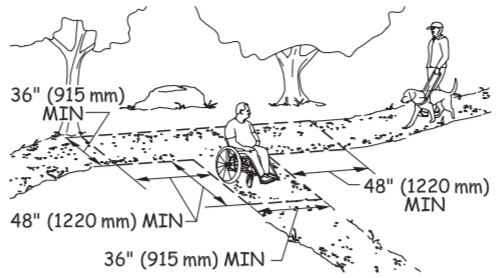
Figure 12—A T-intersection may be used as a passing space on an outdoor recreation access route or a beach access route if it has the dimensions shown (or larger).
Consider providing either a minimum clear width of 60 inches or passing spaces at shorter intervals where an ORAR is heavily used or adjoins elements, spaces, or facilities that are heavily used. Also, consider providing a minimum clear width of 60 inches if the ORAR is a boardwalk or otherwise not at the same level as the adjoining ground surface or if the edge is bordered by timbers or edge protection.
When the intersection of two ORARs serves as a passing space, the vertical alignment of the routes at the intersection that form the T-shaped space must be nominally planar (i.e., as flat as possible) so that all the wheels of a mobility device touch the ground when turning into and out of the passing space.
Passing spaces and resting intervals can overlap. When passing spaces and resting intervals overlap, the technical requirements for resting intervals apply and the slope of the surface must be no steeper than 1:48 (2 percent) in any direction when the ORAR is constructed of concrete, asphalt, or boards. When the surface is constructed of materials other than asphalt, concrete, or boards, slopes no steeper than 1:20 (5 percent) are allowed when necessary for drainage. Otherwise, passing-space surfaces must have the same slopes as the adjoining ORAR.
Obstacles [1016.5]
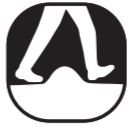
Obstacles are anything that interrupts the evenness of the surface of an ORAR. Obstacles may occur where a tree root or rock protrudes above the surface or where two different surfaces abut, such as when a concrete path joins a natural surface. When an ORAR is provided within a vehicular route, traffic-calming devices or speed bumps can be obstacles. If obstacles are pronounced, they can pose a serious tripping hazard and make it difficult to travel using a mobility device.
The limit on the height of obstacles on ORARs, passing spaces, and resting intervals is based on the surface material used. When the surface is constructed of concrete, asphalt, or boards, obstacles cannot exceed one-half inch in height at their highest point. When the surface is constructed of materials other than concrete, asphalt, or boards, obstacles cannot exceed 1 inch in height at their highest point.
Frequent obstacles and obstacles that cross the full width of an ORAR can make travel difficult for people using mobility devices. Where possible, separate obstacles that cross the full width of an ORAR by at least 48 inches so people using mobility devices can fully cross one obstacle before confronting another.
Openings [1016.6]
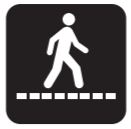
Openings are gaps in the surface of an ORAR. Gaps, including spaces between the planks on a boardwalk or slots in a drainage grate, that are big enough for wheels, cane, or crutch tips to drop through or become trapped in are potential hazards (figure 13). Where possible, drainage grates should be located outside the minimum clear width of the ORAR.
Openings in the surface of ORARs, passing spaces, and resting intervals must be small enough so that a sphere more than one-half inch in diameter cannot pass through. Where possible, elongated openings should be placed perpendicular, or as close to perpendicular as possible, to the dominant direction of travel.
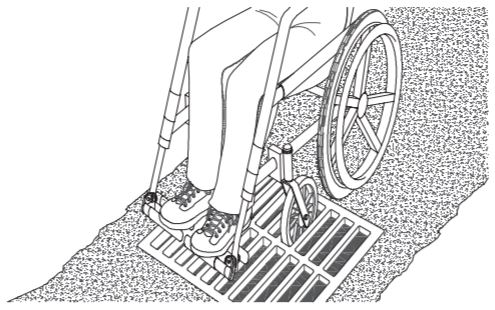
Figure 13—Whenever possible, elongated openings in outdoor recreation access routes should be placed perpendicular to the dominant direction of travel to avoid creating potential problems.
Running Slope [1016.7.1]

Running slope, also referred to as grade, is the lengthwise slope of an ORAR, parallel to the direction of travel. ORAR sections of any length may be constructed with a running slope up to 1:20 (5 percent). To accommodate steep terrain, ORARs may be designed with shorter sections that have a steeper running slope and length, as shown in table 3, with resting intervals at the top and bottom of each section. The running slope of any section of an ORAR must never exceed 1:10 (10 percent).
| Running Slope of Segment of Outdoor Recreation Access Route | Maximum Length of Segment | |
| Steeper Than | But Not Steeper Than | |
| 1:20 (5%) | 1:12 (8.33%) | 50 feet |
| 1:12 (8.33%) | 1:10 (10%) | 30 feet |
Cross Slope [1016.7.2]
Cross slope is the side-to-side slope of the surface of an ORAR. When the surface is constructed of concrete, asphalt, or boards, the cross slope must be no steeper than 1:48 (2 percent). When the surface is constructed of materials other than concrete, asphalt, or boards, cross slopes no steeper than 1:20 (5 percent) are allowed when necessary for drainage.
Resting Intervals [1016.8]
Resting intervals are level areas that provide an opportunity for people to rest before continuing along an ORAR. Resting intervals are required at the top and bottom of an ORAR section any time the running slope exceeds 1:20 (5 percent).
Resting intervals may be provided within an ORAR or adjacent to an ORAR. When a resting interval is within an ORAR, it must be at least 60 inches long and at least as wide as the widest section of the ORAR leading into it (figure 14).
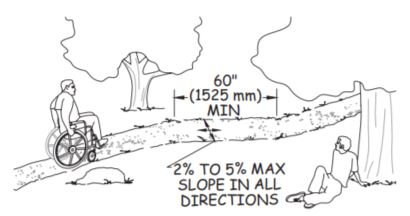
Figure 14—Length and slope requirements for resting intervals.
When a resting interval is adjacent to an ORAR, it must be at least 60 inches long and at least 36 inches wide. A turning space that complies with section 304.3.2 of the ABA Standards must be provided. The vertical alignment of the ORAR, turning space, and resting interval must be nominally planar (i.e., as flat as possible) so that all the wheels of a mobility device touch the ground surface when turning into and out of the resting interval.
When the surface of the resting interval is constructed of concrete, asphalt, or boards, the slope of the resting interval must be no steeper than 1:48 (2 percent) in any direction. When the surface of the resting interval is constructed of materials other than concrete, asphalt, or boards, slopes no steeper than 1:20 (5 percent) are allowed when necessary for drainage.
Protruding Objects [1016.9]
Objects that protrude into ORARs, passing spaces, and resting intervals can pose hazards to people who are blind or have low vision. Constructed elements, such as signs on ORARs, resting intervals, and passing spaces, must comply with the technical requirements for protruding objects in section 307.2 of the ABA Standards (figure 15).
The technical requirements for protruding objects do not apply to natural features, such as tree branches and rock formations. To prevent injuries to people who are blind or have low vision, whenever possible, maintain the vertical clearance free of tree branches a minimum of 80 inches above the ground surface along ORARs, resting intervals, and passing spaces.
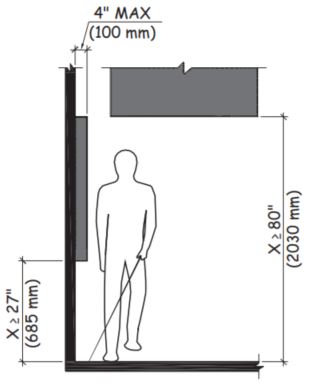
Figure 15—Constructed elements must comply with the technical requirements for protruding objects in section 307.2


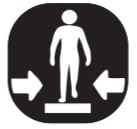

User Comments/Questions
Add Comment/Question